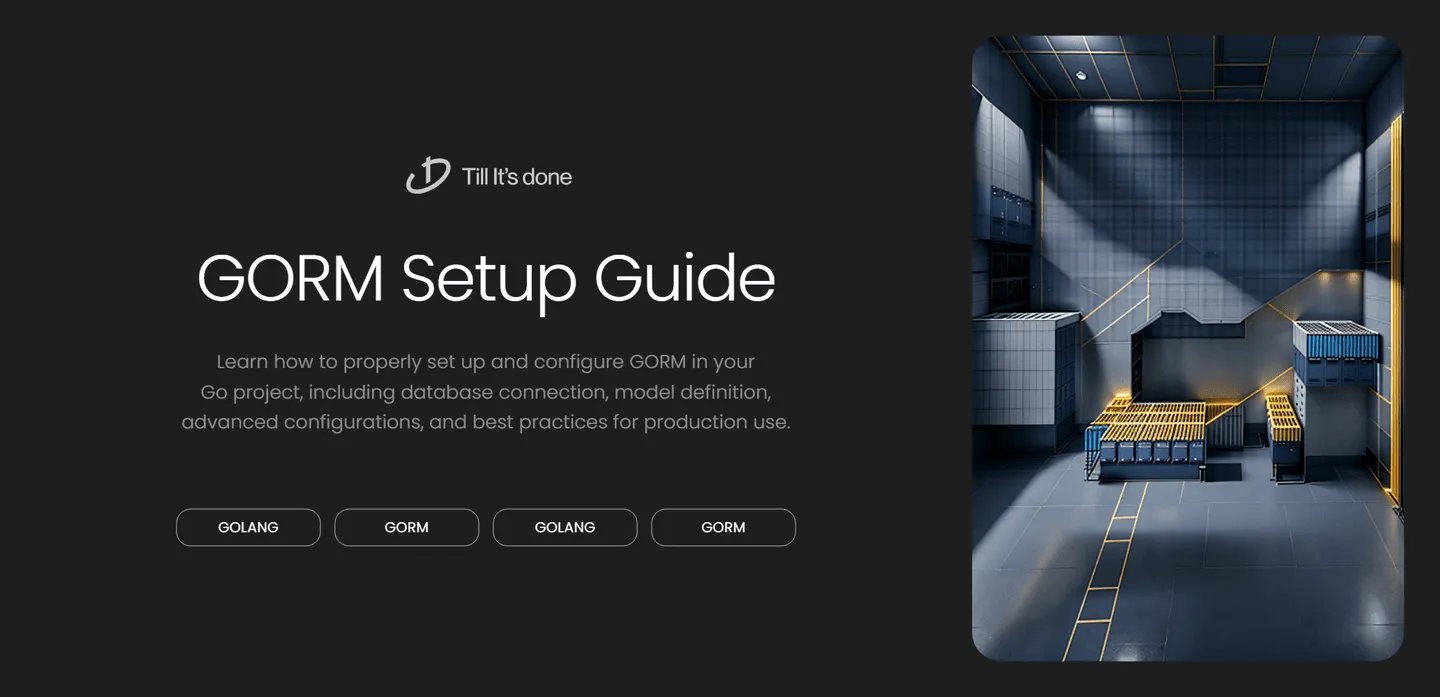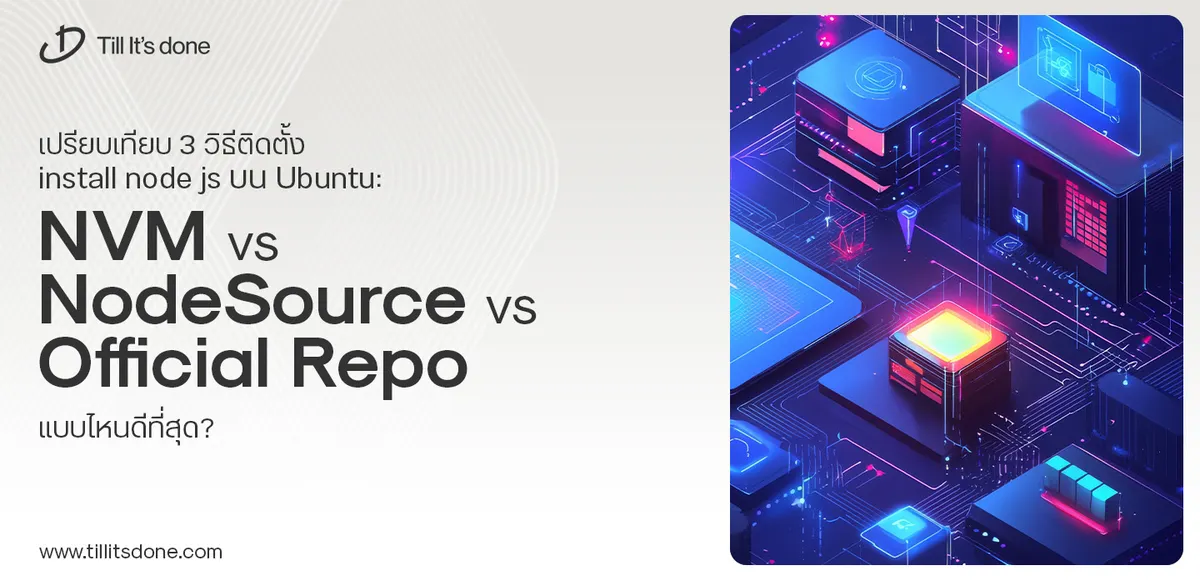- Services
- Case Studies
- Technologies
- NextJs development
- Flutter development
- NodeJs development
- ReactJs development
- About
- Contact
- Tools
- Blogs
- FAQ
How to Set Up and Configure GORM in Go Project

How to Set Up and Configure GORM in Your Go Project

Setting up a robust database layer in your Go application is crucial for building scalable and maintainable systems. GORM, a fantastic ORM library for Golang, makes database operations a breeze while providing powerful features out of the box. Let’s dive into how you can set up and configure GORM in your Go project.
Prerequisites
Before we begin, make sure you have:
- Go installed on your system
- A running database instance (MySQL, PostgreSQL, or SQLite)
- Basic understanding of Go programming
Installing GORM
First things first, let’s get GORM installed in your project. Open your terminal and run:
go get -u gorm.io/gormgo get -u gorm.io/driver/mysql // For MySQL// orgo get -u gorm.io/driver/postgres // For PostgreSQL// orgo get -u gorm.io/driver/sqlite // For SQLite
Basic Configuration
Let’s create a basic database configuration. Here’s a simple example using MySQL:
package database
import ( "fmt" "log" "os"
"gorm.io/driver/mysql" "gorm.io/gorm")
func InitDB() *gorm.DB { dsn := fmt.Sprintf("%s:%s@tcp(%s:%s)/%s?charset=utf8mb4&parseTime=True&loc=Local", os.Getenv("DB_USER"), os.Getenv("DB_PASSWORD"), os.Getenv("DB_HOST"), os.Getenv("DB_PORT"), os.Getenv("DB_NAME"), )
db, err := gorm.Open(mysql.Open(dsn), &gorm.Config{}) if err != nil { log.Fatal("Failed to connect to database:", err) }
return db}Defining Models
One of GORM’s strengths is its intuitive model definition. Here’s how you can define a simple user model:

type User struct { gorm.Model Name string `gorm:"size:255;not null"` Email string `gorm:"size:255;not null;unique"` Age uint `gorm:"not null"` IsActive bool `gorm:"default:true"`}Advanced Configuration
For production applications, you might want to fine-tune your GORM configuration:
func InitDB() *gorm.DB { db, err := gorm.Open(mysql.Open(dsn), &gorm.Config{ Logger: logger.Default.LogMode(logger.Info), NamingStrategy: schema.NamingStrategy{ SingularTable: true, NoLowerCase: true, }, AllowGlobalUpdate: false, })
sqlDB, err := db.DB() if err != nil { log.Fatal(err) }
// Set connection pool settings sqlDB.SetMaxIdleConns(10) sqlDB.SetMaxOpenConns(100) sqlDB.SetConnMaxLifetime(time.Hour)
return db}Best Practices and Tips
- Always use environment variables for database credentials
- Implement proper error handling
- Set up connection pooling based on your application’s needs
- Use transactions for critical operations
- Create database indexes for frequently queried fields
Remember to close your database connection when your application shuts down:
sqlDB, err := db.DB()defer sqlDB.Close()
Conclusion
Setting up GORM correctly lays the foundation for a robust database layer in your Go application. By following these configurations and best practices, you’ll have a reliable and efficient database setup ready for your project’s needs.
Remember to regularly check GORM’s official documentation for updates and new features that might benefit your application. Happy coding!
 สร้างเว็บไซต์ 1 เว็บ ต้องใช้งบเท่าไหร่? เจาะลึกทุกองค์ประกอบ website development cost อยากสร้างเว็บไซต์แต่ไม่มั่นใจในเรื่องของงบประมาณ อ่านสรุปเจาะลึกตั้งแต่ดีไซน์, ฟังก์ชัน และการดูแล พร้อมตัวอย่างงบจริงจาก Till it’s done ที่แผนชัด งบไม่บานปลายแน่นอน
สร้างเว็บไซต์ 1 เว็บ ต้องใช้งบเท่าไหร่? เจาะลึกทุกองค์ประกอบ website development cost อยากสร้างเว็บไซต์แต่ไม่มั่นใจในเรื่องของงบประมาณ อ่านสรุปเจาะลึกตั้งแต่ดีไซน์, ฟังก์ชัน และการดูแล พร้อมตัวอย่างงบจริงจาก Till it’s done ที่แผนชัด งบไม่บานปลายแน่นอน  Next.js สอน 14 ขั้นตอนเบื้องต้น: สร้างโปรเจกต์แรกใน 30 นาที เริ่มต้นกับ Next.js ใน 14 ขั้นตอนเพียงแค่ 30 นาที พร้อม SSR/SSG และ API Routes ด้วยตัวอย่างโค้ดง่าย ๆ อ่านต่อเพื่อสร้างโปรเจ็กต์แรกได้ทันทีที่นี่
Next.js สอน 14 ขั้นตอนเบื้องต้น: สร้างโปรเจกต์แรกใน 30 นาที เริ่มต้นกับ Next.js ใน 14 ขั้นตอนเพียงแค่ 30 นาที พร้อม SSR/SSG และ API Routes ด้วยตัวอย่างโค้ดง่าย ๆ อ่านต่อเพื่อสร้างโปรเจ็กต์แรกได้ทันทีที่นี่  วิธีสมัคร Apple Developer Account เพื่อนำแอปขึ้น App Store ทีละขั้นตอน อยากปล่อยแอปบน App Store ระดับโลก มาอ่านคู่มือสมัคร Apple Developer Account พร้อมเคล็ดลับ TestFlight และวิธีอัปโหลดที่ง่ายในบทความเดียวนี้ได้เลย
วิธีสมัคร Apple Developer Account เพื่อนำแอปขึ้น App Store ทีละขั้นตอน อยากปล่อยแอปบน App Store ระดับโลก มาอ่านคู่มือสมัคร Apple Developer Account พร้อมเคล็ดลับ TestFlight และวิธีอัปโหลดที่ง่ายในบทความเดียวนี้ได้เลย  TypeScript Interface คืออะไร? อธิบายพร้อมวิธีใช้และข้อแตกต่างจาก Type เรียนรู้วิธีใช้ TypeScript Interface เพื่อสร้างโครงสร้างข้อมูลที่ปลอดภัยและเข้าใจง่าย พร้อมเปรียบเทียบข้อดีข้อแตกต่างกับ Type ที่คุณต้องรู้ ถูกรวมเอาไว้ในบทความนี้แล้ว
TypeScript Interface คืออะไร? อธิบายพร้อมวิธีใช้และข้อแตกต่างจาก Type เรียนรู้วิธีใช้ TypeScript Interface เพื่อสร้างโครงสร้างข้อมูลที่ปลอดภัยและเข้าใจง่าย พร้อมเปรียบเทียบข้อดีข้อแตกต่างกับ Type ที่คุณต้องรู้ ถูกรวมเอาไว้ในบทความนี้แล้ว  Material-UI (MUI) คืออะไร อยากสร้าง UI สวยงามและเป็นมืออาชีพในเวลาอันรวดเร็วใช่ไหม มาทำความรู้จักกับ Material-UI (MUI) ที่ช่วยให้คุณพัฒนาแอปพลิเคชันบน React ได้ง่ายและดูดีในทุกอุปกรณ์
Material-UI (MUI) คืออะไร อยากสร้าง UI สวยงามและเป็นมืออาชีพในเวลาอันรวดเร็วใช่ไหม มาทำความรู้จักกับ Material-UI (MUI) ที่ช่วยให้คุณพัฒนาแอปพลิเคชันบน React ได้ง่ายและดูดีในทุกอุปกรณ์  เปรียบเทียบ 3 วิธีติดตั้ง install node js บน Ubuntu: NVM vs NodeSource vs Official Repo แบบไหนดีที่สุด? เรียนรู้วิธีติดตั้ง Node.js บน Ubuntu ด้วย NVM, NodeSource หรือ Official Repo เลือกวิธีที่เหมาะกับความต้องการของคุณ พร้อมเปรียบเทียบ เพื่อการพัฒนาที่มีประสิทธิภาพ!
เปรียบเทียบ 3 วิธีติดตั้ง install node js บน Ubuntu: NVM vs NodeSource vs Official Repo แบบไหนดีที่สุด? เรียนรู้วิธีติดตั้ง Node.js บน Ubuntu ด้วย NVM, NodeSource หรือ Official Repo เลือกวิธีที่เหมาะกับความต้องการของคุณ พร้อมเปรียบเทียบ เพื่อการพัฒนาที่มีประสิทธิภาพ! Talk with CEO
We'll be right here with you every step of the way.
We'll be here, prepared to commence this promising collaboration.
Whether you're curious about features, warranties, or shopping policies, we provide comprehensive answers to assist you.


